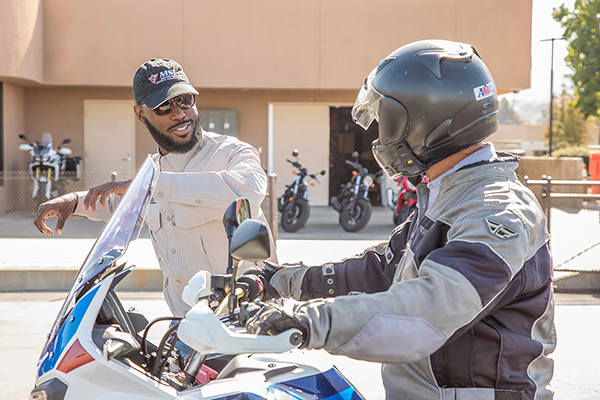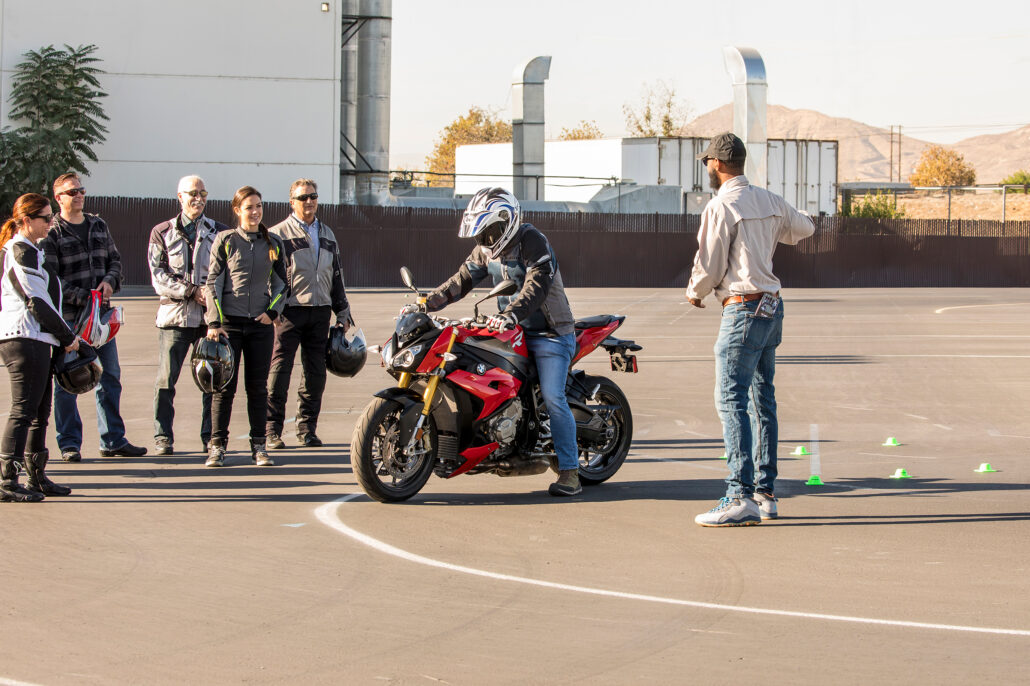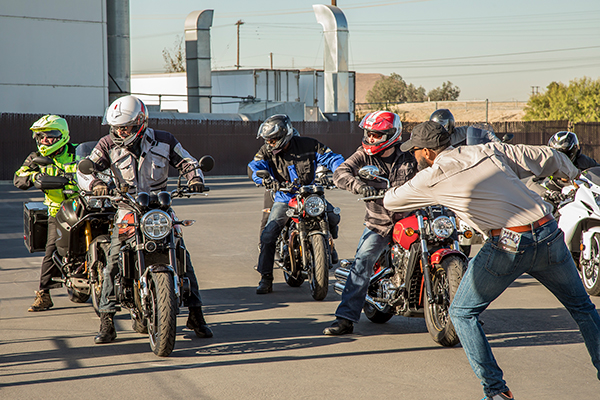AMERICAN MOTORCYCLIST January 2020
Got training? Get more
Learning To Ride Better Is A Lifelong Pursuit
 Even if you don’t list it among your New Year’s resolutions, rider training is something to seriously consider as 2020 arrives.
Even if you don’t list it among your New Year’s resolutions, rider training is something to seriously consider as 2020 arrives.
Many motorcyclists take entry-level courses that teach students how to balance a bike, control the throttle, shift gears, make turns and stop quickly.
But a 1996 study by the California Motorcyclist Safety Program indicated that “rider training is an effective crash countermeasure for riders for the first six months following training.”
So don’t think that getting through the basic course is going to be sufficient.
“Motorcyclists should make a lifetime commitment to growing and retaining their riding skills,” said AMA Recreational Riding Manager Heather Wilson. “An attitude towards safety and training will result in a more competent and safer rider. This can be accomplished through reading training tips, watching videos or hands-on training. As a motorcycle safety instructor, I can attest to how meaningful training can be. Motorcyclists should seek out a training provider on a regular basis who can help them bolster their skills.”
The Federal Highway Administration’s 2016 Motorcycle Crash Causation Study, partially funded by the AMA, determined that motorcycle riders’ “collision avoidance performance could be improved by extending the range of hazard detection and providing riders with more information, enhanced awareness and more time to react to crash risks.”
Advanced training can help riders detect hazards earlier, providing additional time to react properly and, perhaps, avoid a serious crash.
There are courses for returning riders to help them refresh their skills. And there are intermediate and advanced rider courses for those who want to build on their current knowledge and become more proficient motorcyclists.
The entry-level training courses typically provide 250cc motorcycles for students to use. In the intermediate and advanced courses, riders bring their motorcycles, so the techniques they learn can be more easily transferred to the street.
“Novice rider training provides a foundation for the basics of motorcycle controls and physical operation from a technical standpoint, plus strategies for safe and responsible riding,” according to the Motorcycle Safety Foundation (www.msf-usa.org), which provides rider training nationwide. “Advanced training reinforces these skills and strategies, as well as providing a ‘deep dive’ into the procedures and techniques for a lifetime of successful riding.”
The MSF offers an array of formal, advanced hands-on courses such as the Ultimate Bike Bonding RiderCourse, the Advanced RiderCourse, and the Circuit RiderCourse.
Total Control Motorcycle Rider Training Courses (www.totalcontroltraining.net), which oversees the California rider training program, among others, offers the Advanced Riding Clinic, which includes traction management, throttle control, line selection and body position.
The MSF advises all motorcyclists to take advantage of additional training opportunities.
“The result can be increased control of your motorcycle, easier identification of hazardous situations and the joy of sharing your experiences and safety-related tips with other riders,” the MSF said. “One simple tip or reminder can make a world of difference.”
For a list of the state and private motorcycle training programs available, check the National Association of State Motorcycle Safety Administrators website at www.smsa.org/2017Rider%20Education.html.


